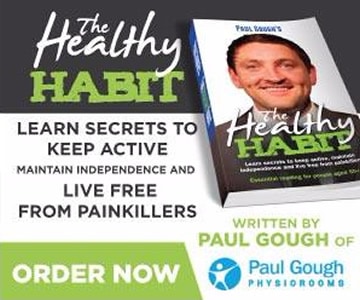(Written by Top Physio, Jonny Corner).
This summer has been huge for sports, the World Cup (although not one of our most memorable!), and the commonwealth games have encouraged lots of people, including myself to get outside, be more active and make the most of this almost unnaturally mild weather.
Of course, with the increase in the number of people playing sports, the chance of injuries increases too.
Over the last few weeks I have been seeing quite a few people with ankle injuries in the physio clinic.
In fact, just yesterday I assessed 3 young lads who had all twisted their ankles whilst playing football.
Most people at some point have twisted their ankle, (normally inwards) and felt some pain on the outside.
(I know I have, many times!)
The ankle is held together by strong rope like structures called ligaments.
Similar to how a tents ropes keep it in place during windy weather, ligaments keep the ankle joint together and supported through the stresses placed upon it when moving.
In many cases when starting back playing sports from a long rest the ankles ability to balance is not as good therefore you will be more likely to twist it. Also the muscles around the ankle might be weaker therefore you will have less control over the joint. The playing surface also plays a big role in ankle injuries.
The 3 lads I mentioned above had all gone from playing on flat indoor sports halls to grass which is harder to balance on and requires more stability from the ankle. It’s simply an injury waiting to happen.
Ankle injuries can take time to heal, for significant ankle tears they can sometimes take over 6 weeks so it’s very important to make sure you are prepared before starting sports.
You can find some quick easy ways to help limit the chance of ankle injuries below in “Jonny’s quick tips!”, listed here:
1.) Improve your balance:
If I had a pound for every time someone told me there balance isn’t very good!. Really there is No excuse for poor balance!. Everyone can work to improve their ability to balance and this will in turn limit your chances of ankle injuries.
One way to do this is by standing on one leg whilst brushing your teeth. Stand on one leg for one minute then change legs and stand on the other for one minute too.
2.) Strengthen your ankle muscles:
Muscles also provide support to the ankle joint. Try sitting on the floor with your knee straight and the outside of your foot touching the wall. Keeping your knee perfectly still push your foot out into the wall and hold for 5 seconds, repeat 10x 3x per day.
If unfortunately you have already injured your ankle:
3.) Use ice NOT heat!:
When an ankle is twisted too far the ligaments can tear slightly and it can swell. The mistake made by the clients I saw this week was they all went home and had warm showers!. Don’t do this!. In the first 3 days after an ankle injury the best thing to do is to ice the area for 10 minutes, 3 x per day leaving an hour between each time you ice. This gets the swelling down, speeding up recovery. (Make sure the ice is in a bag or a damp towel before you apply it).
4.) Do not rush back into playing too soon:
Rest to allow the ankle time to recover!. The amount of time to rest is dependent upon how bad the ankle twist was and how much damage it has done. Normally if the area around the outside of the ankle is bruised it signifies a significant ankle sprain. When you twist an ankle and the ligament tears slightly, scar tissue is formed to join the damaged area back together similar to gluing a Broken vase back together. This scar tissue is quite weak initially and is liable to tear again if appropriate rest isn’t given so check with your physio about rest times!
5.) Physiotherapy ;=)
Scar tissue is quite hard and not very flexible similar to a scar if you cut yourself.
It is very important that this scar tissue is broken down to make it more flexible, less brittle and therefore less likely to tear again. The last thing you need is some scar tissue staying in the ligament, making it a weakness for the future!. Deep frictions from your physiotherapist are one of the best ways to break this scar tissue down.
So stay active, remember my tips and enjoy what’s left of the summer ;=)
Jonny.
Specialist Physio
Paul Gough Physio Rooms
Darlington | Durham | Guisborough | Hartlepool
Tel: 01429 866771
…And if you want to know more ways to ease pain that is coming from your ankle sprain, please look here: www.paulgoughphysio.com/foot-ankle-pain …
There is a FREE 32 page special report waiting for you to look a with ALL our best ways to ease things like ankle sprain and includes, day by day recovery guideline.
Click here to read it: www.paulgoughphysio.com/foot-ankle-pain
Enjoy !


